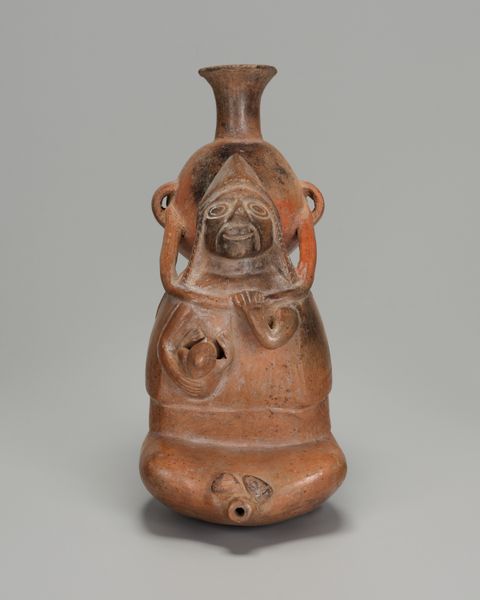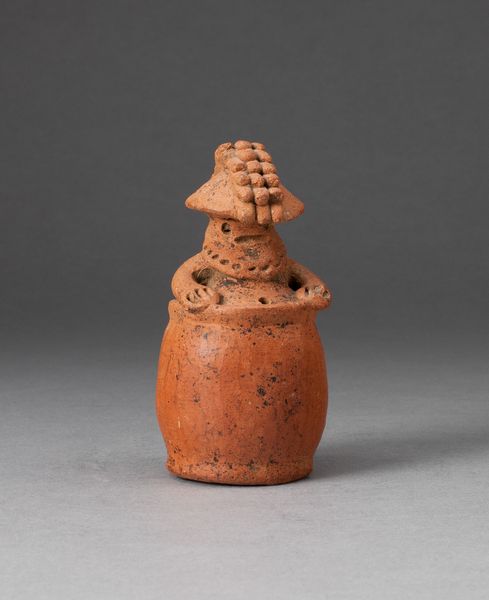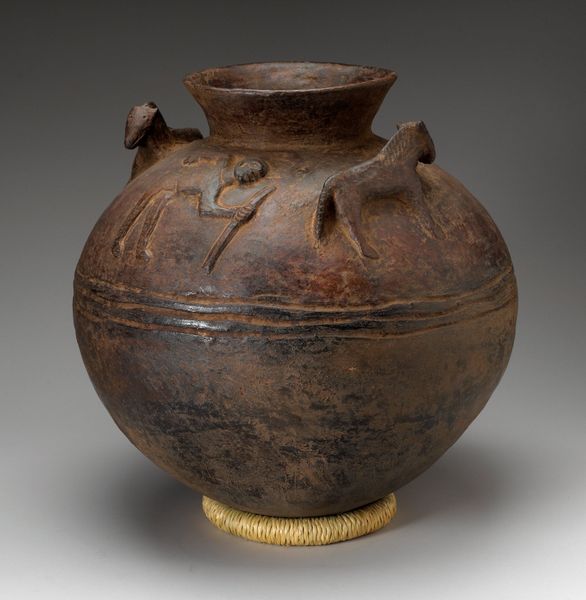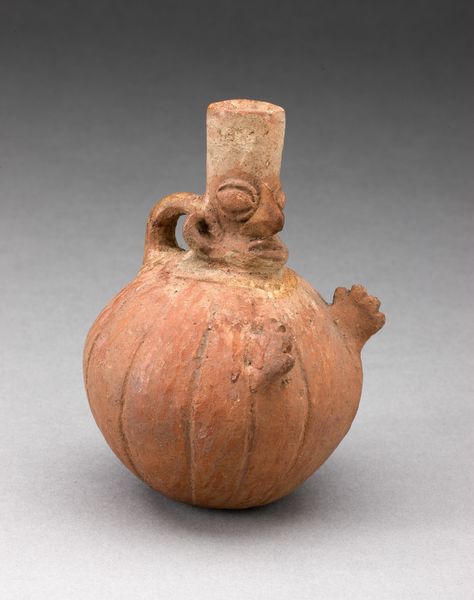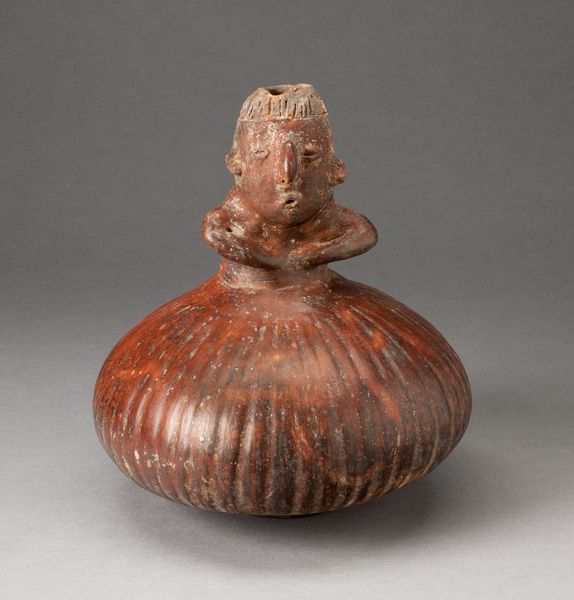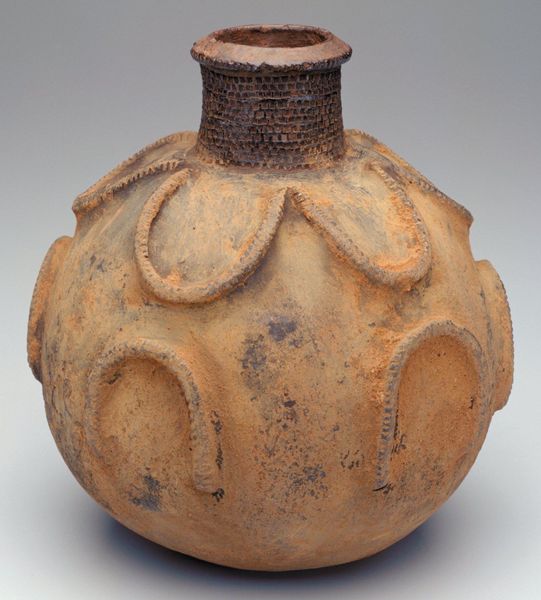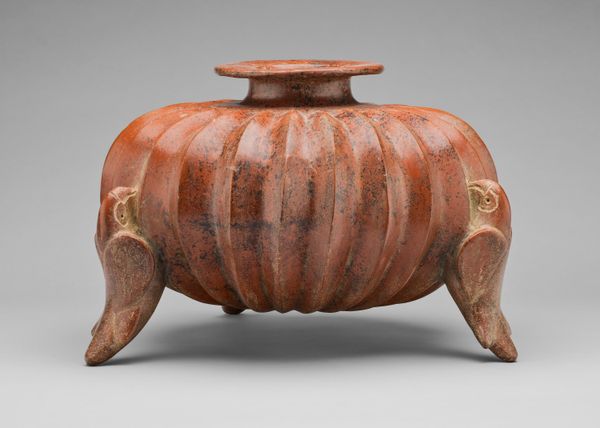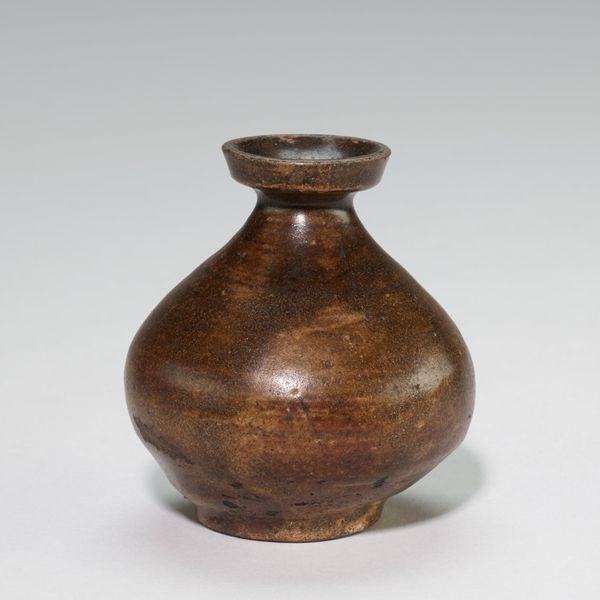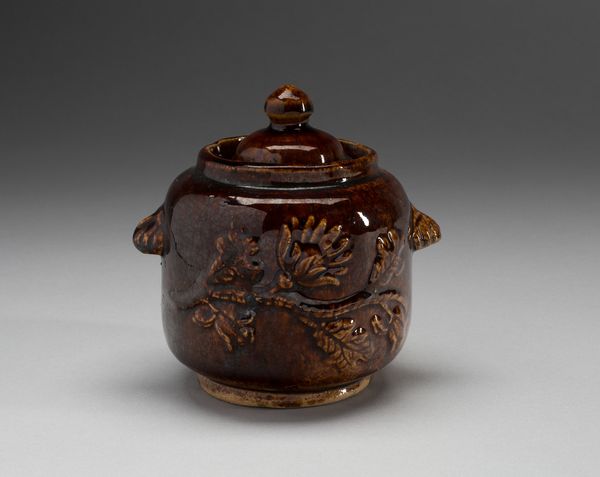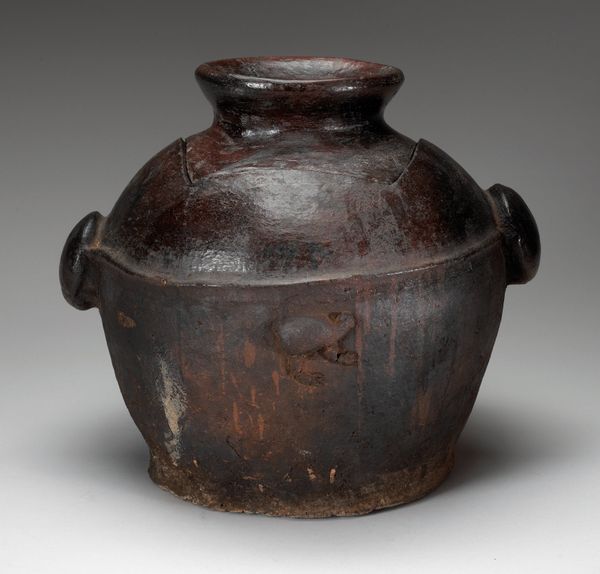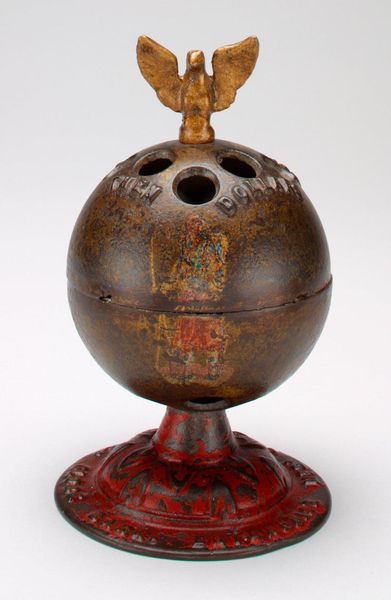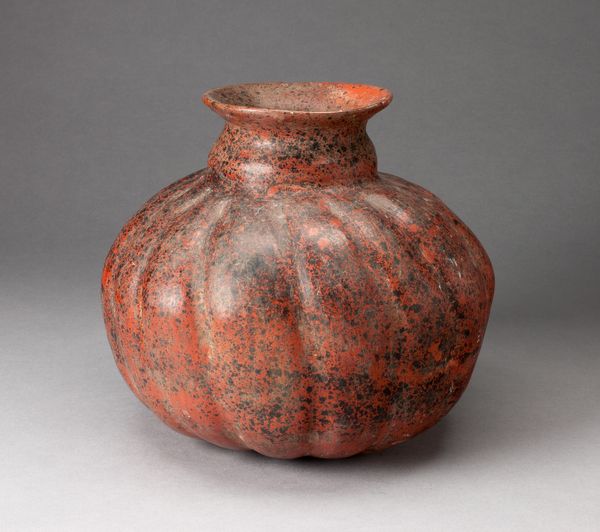
ceramic, earthenware, sculpture
#
ceramic
#
earthenware
#
stoneware
#
sculpture
#
decorative-art
Dimensions: H. 6 in. (15.2 cm)
Copyright: Public Domain
This salt-glazed stoneware sugar bowl was made by James C. Mackley sometime during his career in Pennsylvania. As a historian, I'm immediately drawn to the relationship between this seemingly simple object and the complex social history of sugar. By the late 19th century, when Mackley was working, sugar had transformed from a rare luxury to a common household item, due in no small part to slave labor. The Pennsylvania region was home to many abolitionists at the time, which may have influenced the artist's choice of making domestic ware instead of focusing on more sculptural pieces. The decoration of the bowl—those stylized flowers and the bird on top—speaks to the maker’s desire to make something beautiful and refined out of a humble material. Historical societies, census data, and period newspapers are essential for understanding Mackley’s career and the economic and social context of his work. Such research reveals the ways in which everyday objects like this sugar bowl reflect the values and contradictions of their time.
Comments
No comments
Be the first to comment and join the conversation on the ultimate creative platform.
